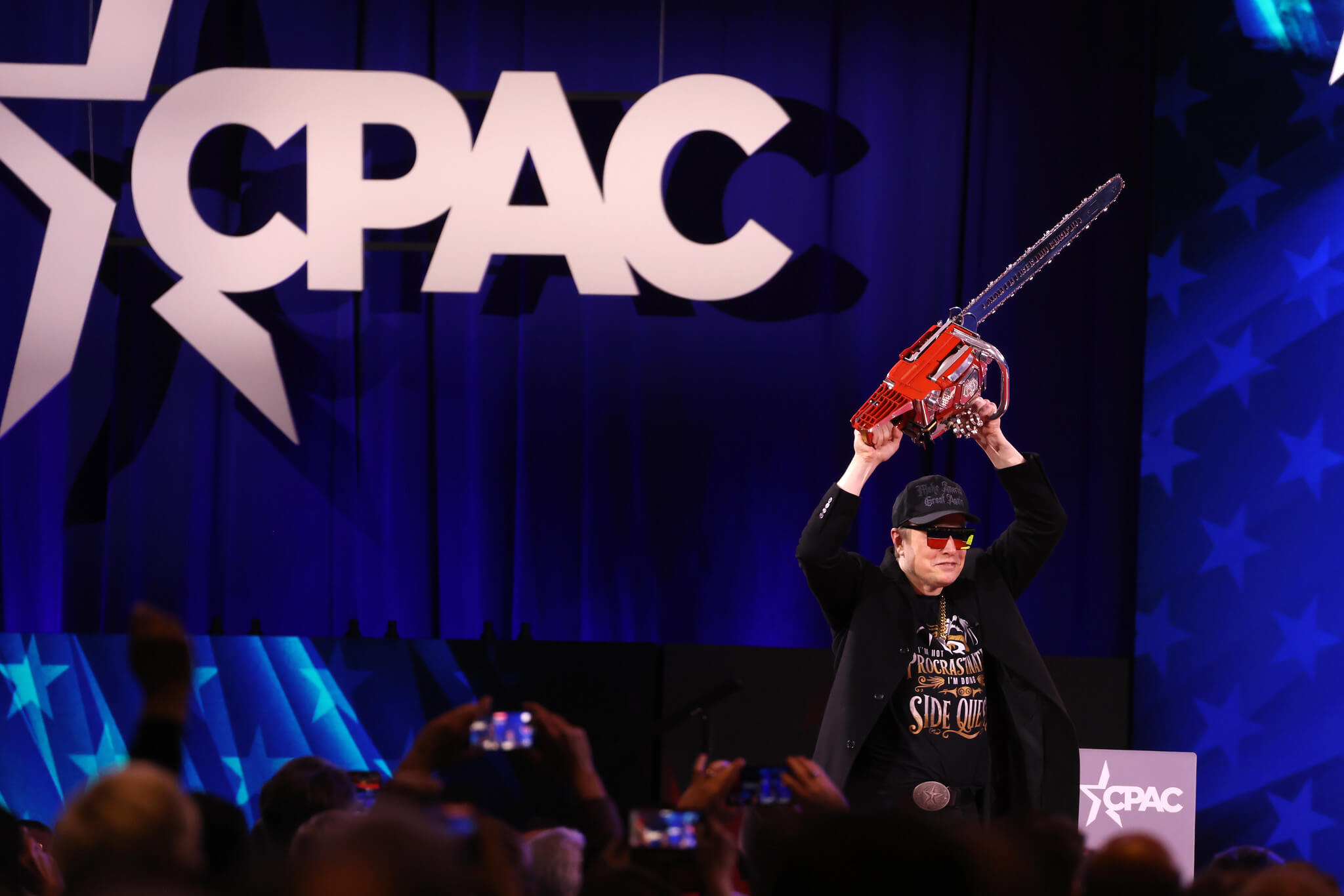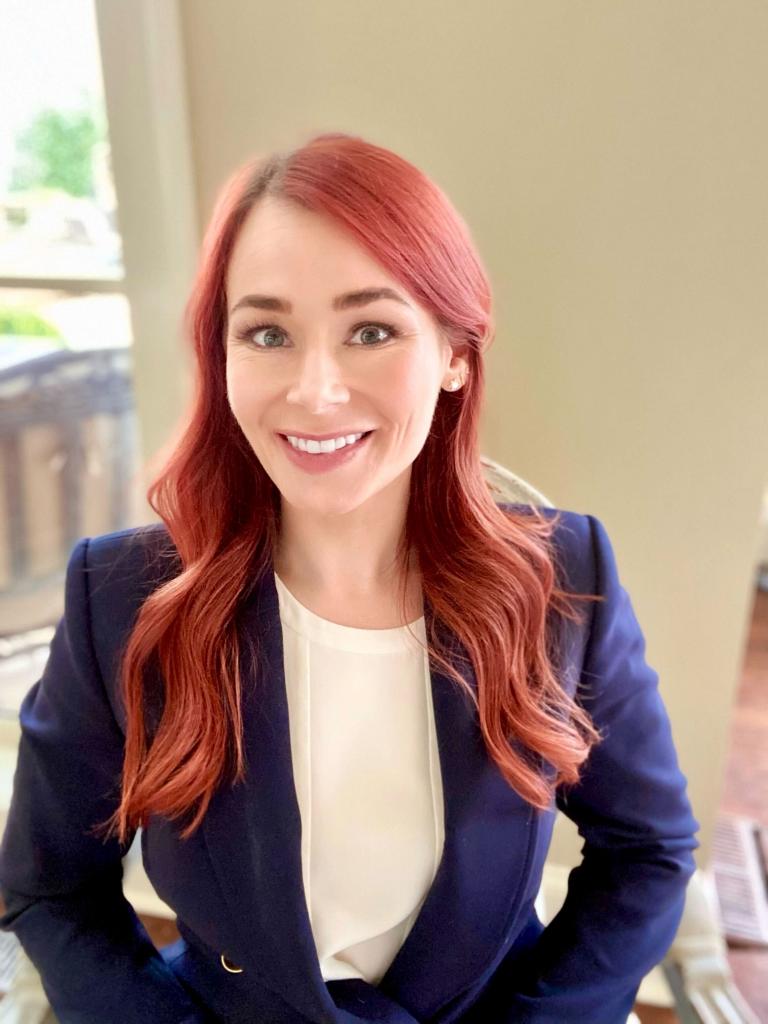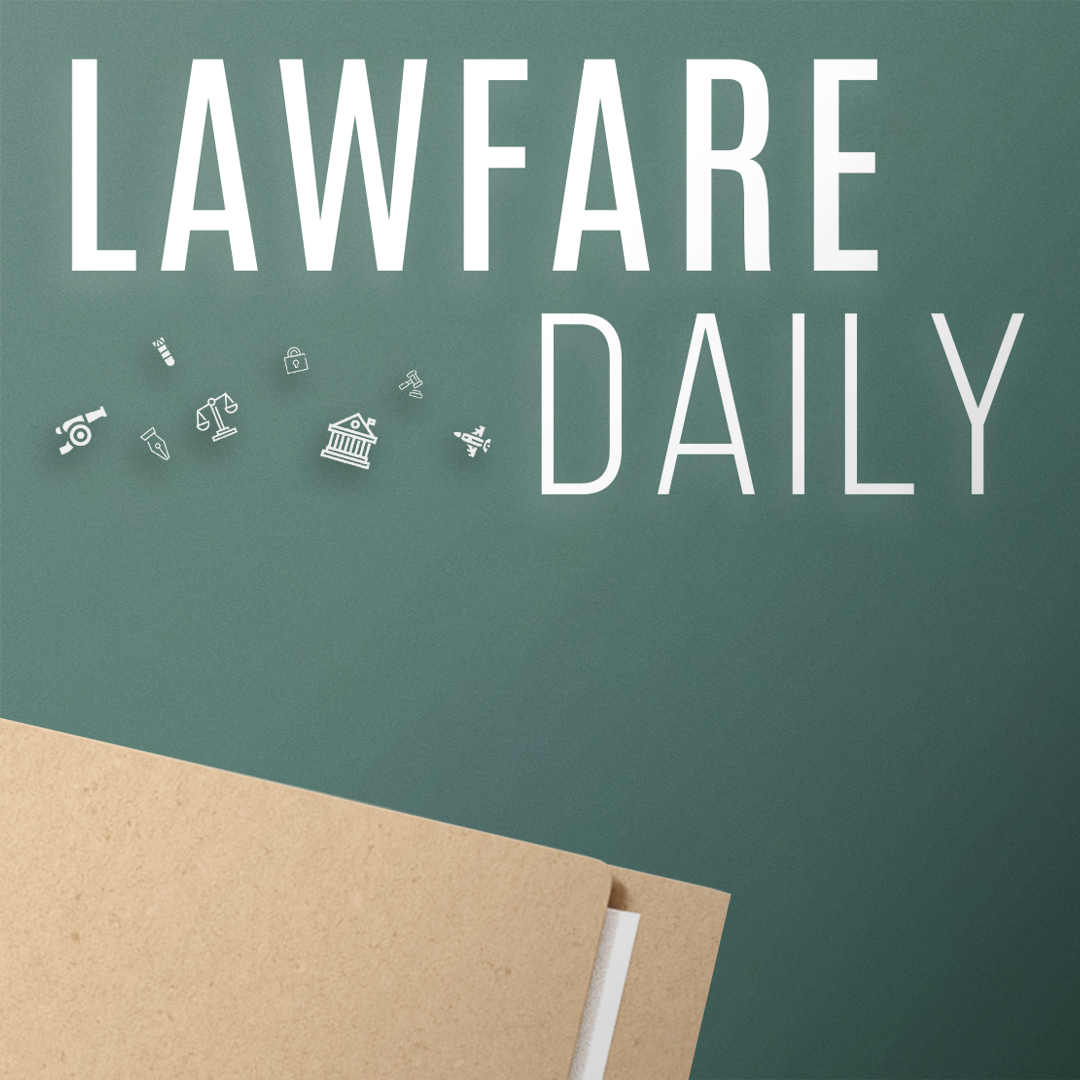Who Is Running the U.S. DOGE Service?
At a recent hearing, no one—not even the Trump administration’s own lawyers—seemed to know.

Published by The Lawfare Institute
in Cooperation With

The Trump administration’s own lawyers say that they don’t know who is in charge of the U.S. DOGE Service—or whether an administrator for the organization even exists.
Yesterday, Judge Colleen Kollar-Kotelly held a preliminary injunction hearing in Alliance for Retired Americans v. Bessent, a suit in which the plaintiffs claim that the Treasury Secretary, Scott Bessent, violated federal law by allowing individuals associated with DOGE to access the Treasury's payment system. During the hearing, Judge Kollar-Kotelly pressed a Justice Department attorney, Bradley Humphreys, on a series of unresolved questions regarding the structure of the organization and the role of Elon Musk. For the most part, Humphreys was unable to answer her questions.
Judge Kollar-Kotelly’s grilling of Humphreys has received significant attention, in part because the lack of information stands in stark contrast to Musk’s claims that DOGE is “maximally transparent.” But the questions posed by the judge also suggest that, as the New York Times puts it, “there could be problems looming for Mr. Musk’s organization.” Specifically, the judge raised doubts about the constitutionality of DOGE’s structure and operations under the Appointments Clause.
The judge has yet to rule on the plaintiff’s motion for a preliminary injunction, and a transcript of the hearing is not available at the time of this writing. In lieu of a verbatim transcript, below is an excerpt from the exorbitantly detailed notes I took during the exchange between Judge Kollar-Kotelly and Humphreys.
Feb. 24: Preliminary Injunction Hearing in Alliance for Retired Americans v. Bessent
[Following argument by counsel for the plaintiffs, Judge Kollar-Kotelly invites Humphreys to address the court on behalf of the government.]
JUDGE KOLLAR-KOTELLY: I have some questions on DOGE’s organizational structure. It’s rather opaque…On Jan. 19 of this year [prior to Trump’s inauguration], where was USDS located within the federal bureaucracy? Was it a component of OMB, as I understand it?
[Humphreys replies that he may need to confer with his colleagues. He says he doesn’t think the organizational structure of DOGE is relevant to the issues raised in the plaintiff’s motion.]
JUDGE KOLLAR-KOTELLY: They do make a difference, ultimately, and I can get to that…And some of this is obviously factual information that I would hope the government would know…
HUMPHREYS: I can check on that, Your Honor.
JUDGE KOLLAR-KOTELLY: Let me get back to it. Do you know where in the federal bureaucracy DOGE was located on Jan. 19? Was it a component of OMB?
HUMPHREYS: I do believe that’s correct, Your Honor.
JUDGE KOLLAR-KOTELLY: Okay, and the administrator of USDS [DOGE] at that point was a Schedule C employee?
HUMPHREYS: I don’t know the answer, Your Honor.
JUDGE KOLLAR-KOTELLY: Do you know anything about who was in charge when it was in OMB?
HUMPHREYS: No, Your Honor.
[The judge follows up with another question about the command structure when DOGE was a component of OMB. Humphreys replies that he just doesn’t have that information at this time. Judge Kollar-Kotelly, directing her attention to Humphreys’ co-counsel, asks: “Does anybody at the table know?” No one responds.]
JUDGE KOLLAR-KOTELLY: What I’m getting at is that I understand it was a component of OMB. At this point, there doesn’t appear to be an administrator, but I’ll get to that. When it was with OMB, I take it that it did have an administrator who was a Schedule C government employee?
HUMPHREYS: I don’t have that information at this time.
JUDGE KOLLAR-KOTELLY: Okay, anyone else know at the table? This would have been before it was relocated to the Executive Office of the President.
HUMPHREYS: We do not have that information.
JUDGE KOLLAR-KOTELLY: That's okay. I realize that you may not have prepared for this. So now USDS [DOGE] has been renamed, and it's been relocated out of OMB to the Executive Office of the President. And an administrator of DOGE reports to the White House Chief of Staff. Is that correct at this point?
HUMPHREYS: That is the terms of the executive order.
JUDGE KOLLAR-KOTELLY: Okay, is the administrator of USDS still a Schedule C employee position?
HUMPHREYS: Um, I don’t know.
[Judge Kollar-Kotelly asks a series of questions about the name of USDS, which Trump’s executive order changed from the U.S. Digital Service to the U.S. DOGE Service, also known as “DOGE.” She then returns to the issue of the administrator.]
JUDGE KOLLAR-KOTELLY: On Feb. 17, the Justice Department represented to Judge Tanya Chutkan that Mr. Musk is not the administrator of DOGE. Is that correct?
HUMPHREYS: That is correct.
[The judge then lists a number of statements from White House officials and Mr. Musk regarding the latter’s role in DOGE].
JUDGE KOLLAR-KOTELLY: So, if I have to decide at some point what role Mr. Musk has in DOGE, what representation do I provide? He’s not the administrator. He obviously has a role…What is his position? He’s not the administrator and he’s not an employee, as I understand it, of DOGE. But he seems to be speaking on behalf of DOGE. So, can you tell me what his role is?
HUMPHREYS: I don't believe that issue is presented in the pleadings. But with that caveat, my understanding is that Mr. Musk is a close advisor to the president. However, for our purposes, the inquiry flows from the president to the Secretary of the Treasury, who then oversees Mr. Krause through the [Treasury] chief of staff.
JUDGE KOLLAR-KOTELLY: But where is Mr. Musk in all this?
HUMPHREYS: I don’t have any further information. He’s a close adviser to the president, which then, under the president’s authority, goes to the Secretary of Treasury and then down to the Treasury—
JUDGE KOLLAR-KOTELLY: So as an adviser, would Musk be in some other employment category?
HUMPHREYS: I’m not aware.
JUDGE KOLLAR-KOTELLY: Okay, so, is there an administrator of DOGE at the present time?
HUMPHREYS: I don’t know the answer to that.
JUDGE KOLLAR-KOTELLY: You don’t know whether there is an administrator, is that what you’re saying?
HUMPHREYS: I’m saying I don’t know.
JUDGE KOLLAR-KOTELLY [directing her attention to Humphreys’ co-counsel]: Okay, everybody at the table speak up over there if you know anything else.
[Silence.]
JUDGE KOLLAR-KOTELLY: I mean, I have to say, the government represented to a judge in the Eastern District of Virginia that there is, quote, an “acting USDS administrator.” And obviously the executive order creating DOGE says there’s a USDS [DOGE] administrator. So isn't there some problem, if there's no administrator, as to how DOGE functions? Who supervises them, how do they come up with ideas? I mean, if you've got employees that are with DOGE, that are working with Treasury, who's telling them what to do, if there's no administrator?
[Humphreys responds that he doesn’t think it’s relevant to the plaintiffs’ claims.]
JUDGE KOLLAR-KOTELLY: It does make a difference, ultimately, and I’m getting there. But I need to know some facts before I get there. Obviously, DOGE employees are involved in this engagement plan. I would think that somebody would be telling them what to do. And as I understand, you don’t know how that’s operating.
HUMPHREYS: As I mentioned, Mr. Krause reports to the Treasury Secretary’s chief of staff. And USDS is not part of that chain of command.
JUDGE KOLLAR-KOTELLY: Ok, but Mr. Krause is part of the USDS team within Treasury. So who is telling him what the priorities or anything else is?
HUMPHREYS: The executive order sets out high-level priorities for modernization.
JUDGE KOLLAR-KOTELLY: So whatever the executive order is, which is fairly broad, he’s to decide how that is to be implemented? Is that the answer?
HUMPHREYS: As otherwise directed by the chief of staff of Treasury and the Treasury Secretary.
JUDGE KOLLAR-KOTELLY: But they’re not a part of the DOGE team. What’s the relationship between the Secretary and Mr. Krause in terms of implementation of DOGE priorities?
HUMPHREYS: As a formal matter, I don't think there is a relationship, Your Honor, the relationship is through the executive order. And I can't say that discussions, you know, don't happen between DOGE and Mr. Krause. I believe they do. But in terms of authority and decision-making, again, it's a chain of command.
JUDGE KOLLAR-KOTELLY: The executive order states that agency heads shall select DOGE team members in consultation with the DOGE administrator. It seems there’s no administrator to consult with. Who did the Treasury Secretary consult with when he hired Mr. Krause? And the executive order states the DOGE administrator shall commence a software modernization initiative. Has the initiative been commenced? By whom? If there's no administrator, who did it?
HUMPHREYS: The team is going about modernizing and improving legacy systems—
JUDGE KOLLAR-KOTELLY: What team??
HUMPHREYS: When I’m referring to the Treasury DOGE team, I’m referring to Mr. Krause, previously, Mr. Elez, and now Mr. Wunderly.
JUDGE KOLLAR-KOTELLY: I mean, with Mr. Krause, it looks like there’s no administrator telling him anything. I'm still having trouble grasping how they're going out as a team if nobody's telling them what to do other than the executive order…And it doesn’t sound like you’ve prepared for these questions, which is unfortunate.
But, as I understand it, there is no administrator. So, what the executive order says the administrator is supposed to be doing at DOGE is not happening. And at this point we don't know who is actually doing these things that the administrator was supposed to do. Is that fair?
HUMPHREYS: I think that’s fair...Again, the mission of the executive order was to modernize the technology…
JUDGE KOLLAR-KOTELLY: Right, but who decides the modernization? Or who decides what to do with the modernization?
HUMPHREYS: As we’ve described, Mr. Krause was selected because he has a wealth of experience.
JUDGE KOLLAR-KOTELLY: Selected by whom?
HUMPHREYS: Well, he was appointed by the Treasury in conjunction with DOGE, officially.
JUDGE KOLLAR-KOTELLY: By DOGE, but there’s no administrator?
HUMPHREYS: I don’t know specifically the person who consulted with the Secretary.
JUDGE KOLLAR-KOTELLY: Well, let me get to my reason for asking, which I think you indicated you thought they were sort of outside of the complaint…Based on the record before me, I have some concerns about the constitutionality, frankly, of DOGE’s structure and operations.
DOGE seems to be taking certain actions, like entering into the payment process engagement plan, which appears to bind a federal agency, the Treasury Department. The Appointments Clause of the Constitution requires that principal officers be nominated by the president and confirmed by the Senate. Employees and inferior officers need to be supervised by principal officers to comply with the Appointments Clause.
I want to ask the few questions that I have about the status of people in DOGE. It appears to me that the people within DOGE could be exercising authority as officers of the United States without complying with the Appointments Clause. I think that’s something that the court should certainly note may be a problem…Maybe it’s not, but on this record we certainly don't have enough information…
Mr. Krause said in his Feb. 12 declaration that he coordinates with “officials” at USDS [DOGE]...“Officials” are not just employees. Those officials are people that could be in a different category than regular employees. My question is, who are the DOGE officials who give Mr. Krause direction? What are their titles? When DOGE officials provide high-level policy direction to a high-ranking employee at Treasury, are they exercising significant authority and discretion? If so, does that make them “officers” under the Appointments Clause? Were they nominated by the president and confirmed by the Senate?
That's why I'm asking these questions, and there’s a lack of information about how all this is structured. Do you understand my concern?
HUMPHREYS: I believe I understand the concern, though not how it relates to these claims.
JUDGE KOLLAR-KOTELLY: Well, if they’re acting unconstitutionally, wouldn’t that be irreparable harm?
HUMPHREYS: No, for many reasons. We can discuss these particular claims…
JUDGE KOLLAR-KOTELLY: Well, wouldn’t it be ultra vires? If they’re taking direction or doing things where they do not have this authority under the Appointments Clause?
HUMPHREYS: I’m just not prepared to opine on issues that the plaintiffs have not briefed.
JUDGE KOLLAR-KOTELLY: Okay, well, I’m raising an issue for you. And hopefully you will learn who's involved, who's in charge, who's giving them direction, which I think is key to making some decisions here about what exactly their authority is…At this point, it appears that you're not in a position to answer those questions. Would that be accurate?
HUMPHREYS: I am not, your honor. I know we have Appointments Clause litigation. I’m happy to consult and update the court.
JUDGE KOLLAR-KOTELLY: Let me move on to some other areas. But I may need to have some additional information. For example, in Free Enterprise Funds the Supreme Court held that inferior officers are officers whose work is supervised by other officers nominated by the president and confirmed by the Senate…So, again, is Mr. Krause supervised by an officer nominated by the president and confirmed by the Senate? I would point out that the White House Chief of Staff is not such an officer.
What I’m getting at is this: Who are the “officials” identified by Mr. Krause [in his declaration]? Did they give direction to him? Were they nominated by the president, confirmed by the Senate? It does seem to me that if you have people that are not authorized to carry out some of these functions that they're carrying out, that does raise an issue. I would hope that by now we would know the structure of DOGE. Who is the administrator? Who's acting as the administrator? Who is providing some of this information? What authority do they have within Treasury, or within DOGE?
HUMPHREYS: Yes, Your Honor. We can report back on that. But I just want to point out one more time that Mr. Krause is overseen by a Senate-confirmed position, Secretary Bessent.
JUDGE KOLLAR-KOTELLY: Okay, let me move on to some other issues…
[Judge Kollar-Kotelly proceeds to pose questions regarding standing and other legal issues raised in the parties’ briefs. The hearing ends without a ruling from the judge.]




